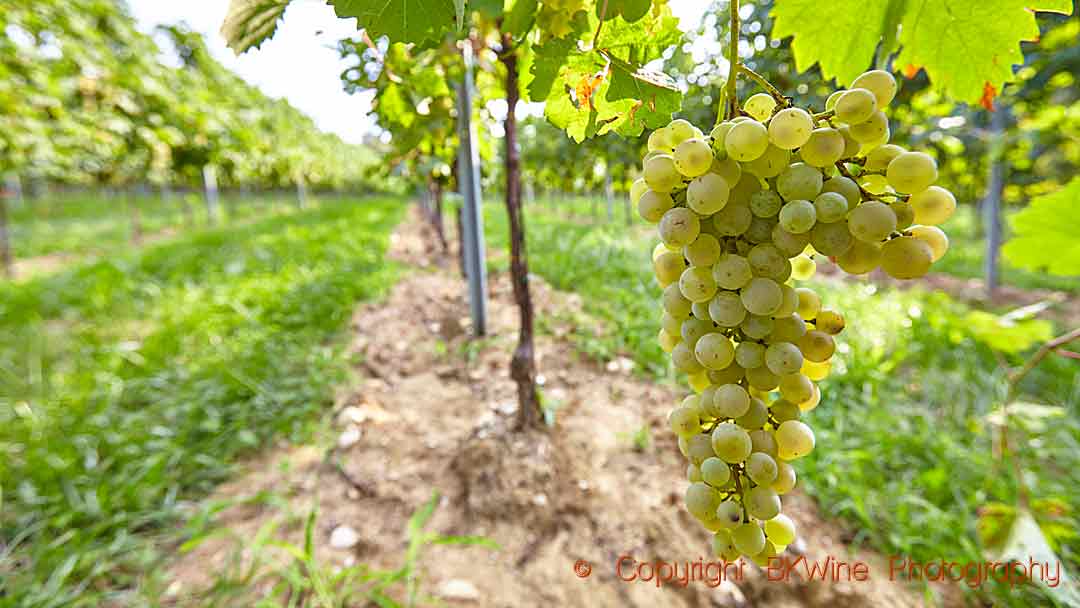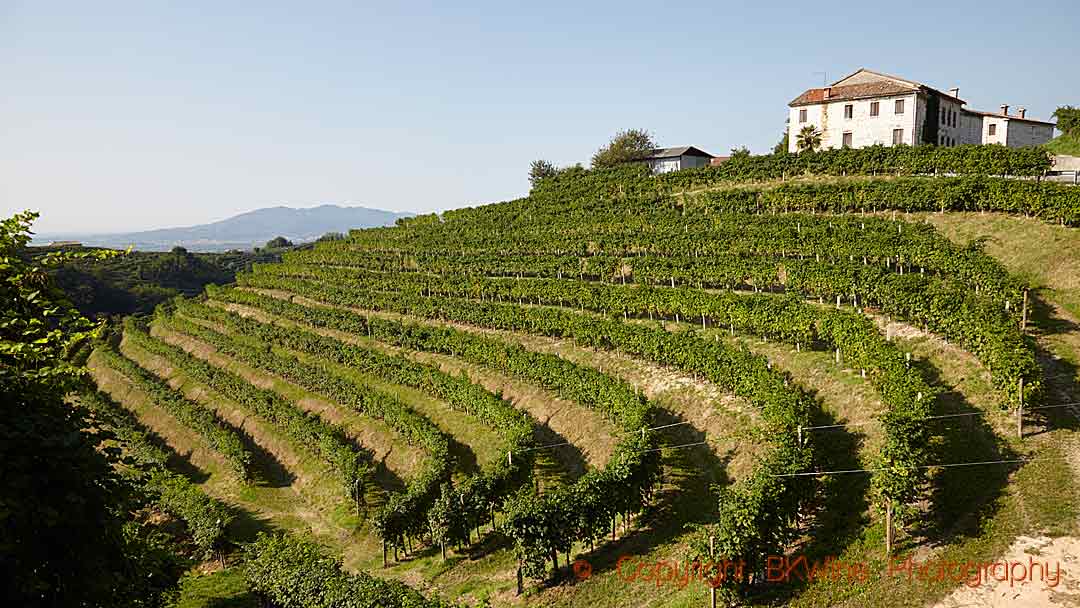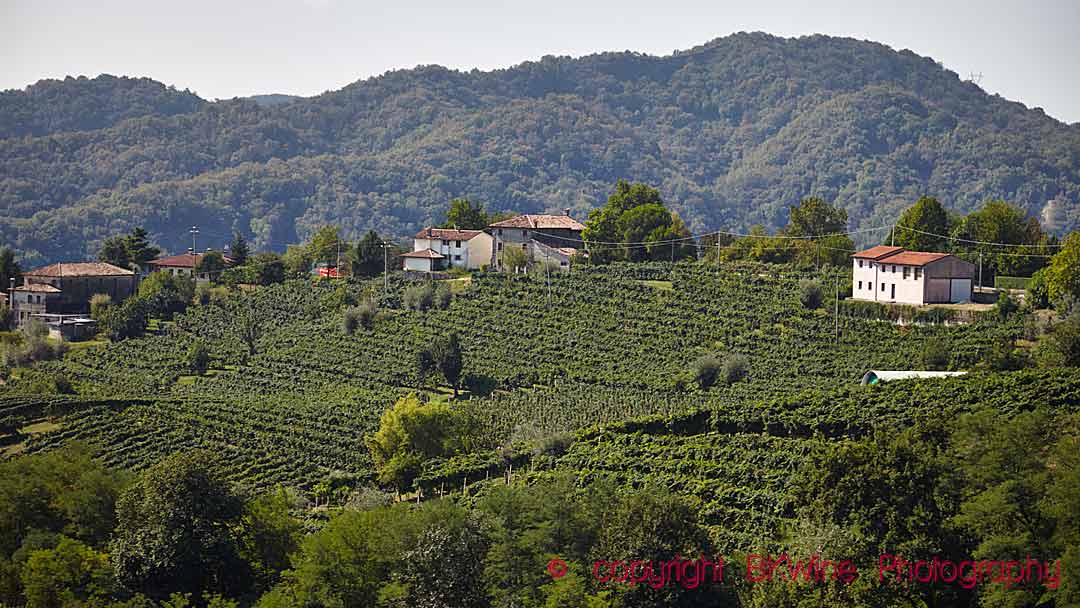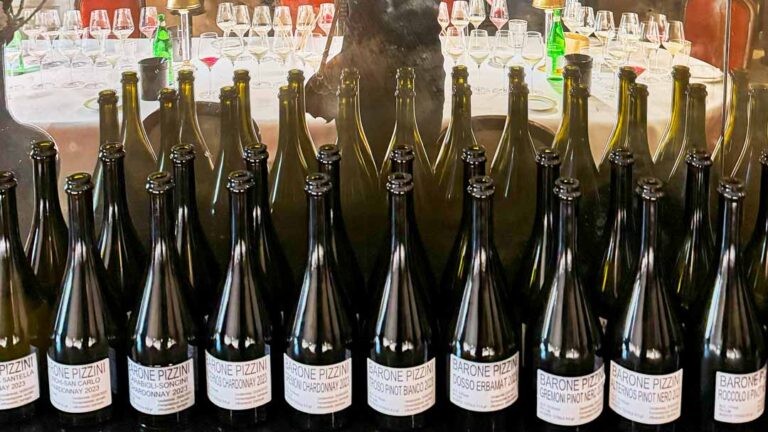The Prosecco bubble does not seem to want to burst. Consumption of sparkling wine from Veneto, in north-eastern Italy, does not appear to be declining. In 2009, the area for production was expanded and recently a pink variant, prosecco rosato, was added. But several voices are critical, especially in the original areas of Conegliano and Valdobbiadene. Some producers today choose to remove the name prosecco from their labels so as not to be associated with what they believe are only market-adapted wines of often low quality. One of these is Col Vetoraz, which recently launched a series of new wines.
Conegliano and Valdobbiadene are the two original prosecco regions. They received DOC status in 1969. At that time, the grape was called prosecco. As other countries began to make prosecco, it was decided in 2009 to make a change. The name of the region was changed to Prosecco, which could then become a protected origin name. At the same time, the grape was renamed from prosecco to glera. The extended area is today called Prosecco DOC and Valdobbiadene and Conegliano received DOCG status.
The production and consumption of prosecco is increasing year by year. Prosecco DOC produced 500 million bottles in 2020, of which almost 80 percent were exported. In 2019, 489 million were made. Prosecco DOCG, which consists of Conegliano-Valdobbiadene DOCG and Asolo DOCG, is around 90 million bottles per year and a little more than half is sold abroad.
Recently, the regulations for Prosecco DOC introduced a pink variant of the sparkling wine. The colour comes from adding up to 15 percent pinot noir. Already in the first year, they reached more than 20 million bottles.
But enough numbers.
Recently, some producers from the original areas have criticized prosecco DOC. They believe that the quality is too low. Too many bottles are made and the new pink variant is seen as an attempt to follow the market without thinking long-term. Sparkling and rosé wines are two categories that are increasing the most right now in the international market. So from a commercial perspective, a pink prosecco is a perfect product. But not everyone thinks so.
“We have chosen not to make a pink variant because there is no tradition of rosé wines in our area,” says Loris dell´Acqua, from the Col Vetoraz winery.
They and some other producers in Conegliano and Valdobbiadene have also chosen to remove the name prosecco from the label.
“We want to differentiate ourselves from Prosecco DOC, there is inflation in the number of bottles made and the prosecco bubble will burst sooner rather than later,” he says.
But isn’t there a risk that the area will lose potential if everyone starts marketing their own brands?
“We want to highlight our area, but right now many producers think it is too risky to remove prosecco from the label,” he continues.
Col Vetoraz is located in Valdobbiadene where it is hilly and the soil has a lot of limestone. The rolling hills are covered with vineyards and reach 400 meters altitude.
“We have large temperature differences between day and night, which gives balanced grapes,” says Loris dell´Acqua.
In total, Col Vetoraz makes 1.2 million bottles from the 102 different vineyard patches, all of which are vinified separately.
“We could make 2 million bottles but keep only the finest grapes to reach the quality we are known for,” says Loris dell´Acqua.
The grapes are picked by hand and Loris emphasizes that they do not clarify the wine with the help of additives.
Col Vetoraz wines are good. Very good. Compared to many prosecco out there, the quality is significantly higher. A genuine fruit. Refreshing freshness. The wines consistently show a balanced elegance.
Here in Italy, people who consider themselves wine-savvy often look down on prosecco. Too easy. Too sweet. Risks of headache. More of a drink to mix in a spritz, than something to enjoy. If you want a nice bubbly, aim for an Alta Langa from Piedmont, a Franciacorta or a bottle of Trentino Doc. If you do not turn to Champagne, of course. Personally, I probably also tend to go in that direction.
Bars and restaurants often offer prosecco – as just “prosecco”. No details on origin or producer. Maybe producers like Col Vetoraz can change that? If others dare to follow, their work would be a little easier. For right now, they seem to be almost alone in the great wild prosecco jungle.
Cuvee 5, 2020, Extra Brut, Col Vetoraz
5 g residual sugar, 40,000 bottles
A dry wine, fruity aromas, pears, peaches and flowers, with light tones of yoghurt, invitingly creamy with nice ripe fruit also on the palate that is balanced by a lively freshness.
Cuvee 13, 2020, extra dry, Col Vetoraz
13 g residual sugar, 40,000 bottles
A full-bodied wine with very ripe fruit that still does not feel sweet. The acidity is there and gives balance. A wine that is suitable both as an aperitif and for lighter dishes.
Millesimato, 2020, Dry, Col Vetoraz
24 g residual sugar
A medium-sweet wine that goes well with Asian food but also with charcuterie. Yellow peaches, ripe pears, creamy and with the typical freshness that balances the ripe fruit and sweetness.















